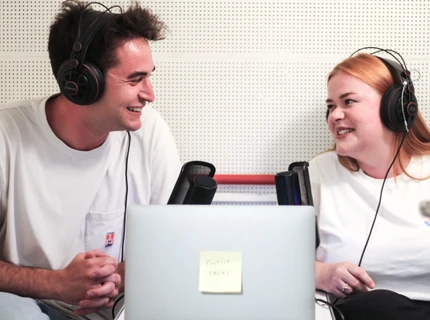
The Touching Beauty of a Tatty Toothbrush
Actually, it is wildly provocative what she does, taking our garbage, the remnants of our materialistic society, all that is left over and which disgusts us. Then she engages us in getting to know the waste and looking at it with new eyes. And suddenly the waste is resurrected as a multicoloured Phoenix, as a work of art in hundreds of colours, 208, to be exact. Maria is a designer. But she is also an artist and a communicator. Her mission is to adjust our eyes to seeing beauty and the potentials in waste resources.
An archive of waste and colours
On a wall in Koldinghus hang 208 test tubes, each with their own content, texture and colour. The content is waste that Maria has collected, granulated, blended or chopped into small pieces in a coffee grinder. It appears in all the colours of the rainbow and a little more, for some are crystal white with tiny red dots, others are dusty gray, some turquoise-blue and shining and others are a cosy brown colour.
It is hard to guess that right now you are looking at a blended plastic butterfly, a pulverised avocado pit, sand from old sandpaper, a crushed horse's hoof, a bicycle reflector or the tufts of Maria's mother's hair. Right away it is hard to see the value in these materials, but we can learn, she believes.
The most beautiful find
Maria is obsessed with waste. As she walks the streets, she constantly scans her surroundings looking for new finds. Her eyes scour along the house walls and into the nooks and crannies, for what if there was something exciting somewhere. "Just look how beautiful this is," she says, presenting an approximately ten-centimeter-long net in orange plastic. The millimeter-thick plastic wires form a symmetrical net that can be expanded into various shapes. Perhaps it has been used to protect a pipe or something similar at some point.
Her best find is the head of a tattered toothbrush. "It was just so beautiful; I was completely overwhelmed," she says. Suddenly it starts to make sense, this beauty in the waste. And that is what she is good at – making people open their eyes to the hidden resources in our waste.
Conversations about the world at the conveyor belt
At the art museum ARoS in Aarhus she has designed and implemented a series of workshops where she engages the participants in sorting waste. In advance, she has painstakingly washed all the items, which are then poured on to a conveyor belt – she is probably one of the few 25-year-old women in the world who passioantly wanted a 4½ meter-long conveyor belt – and the waste is then sorted by the participants according to colour, shape, material, size etc. She engages the participants in transforming the sorted waste into patterns and sculptures. Each person is asked to identify his or her favourite piece of waste and to draw it. In this way, all senses are involved in experiencing the potential and the beauty inherent in the waste. The concrete experience with the waste initiates curious and open conversations about resources, materials, waste and the development of the world – the kind of conversation Maria is passionalte about instigating.
Curiosity is an essential driver for sustainable development, and it is much more fun than admonitions and bad conscience. Curiosity sparks questions, and when you ask questions and seek knowledge you feel much more motivated to act.
“Everyone can participate; sustainability is not only for the elite, you know,” she says. From nature to environmental impact or vice versa Waste is one of the major problems on our afflicted planet. The global mountains of waste are growing, not only in the dumps and landfills, but in the streets and in nature. Maria is concerned with the complexity of these challenges, but still insists on a curious and imaginative approach to the issues:
“What if waste was beautiful? Would it then still be waste? It depends on the eyes that see. Perhaps the archaeologists of the future will one day dig the tatty head of a toothbrush out of the layers of soil, become excited to have discovered this past artefact and will send it to a large museum with a small sign saying how extraordinary it is. Perhaps the future will appreciate the resources more than we do. But we could just practice doing it now ... ”
It is not just the handling of the planet's large amounts of waste that is the challenge. But every little piece of candy wrap, every coffee cup, a torn tarpaulin, an old car tyre, a chipped cup and a scruffy t-shirt tell the story that once people went into nature, took another bite of the resources, initiated a complicated manufacturing process and ended up with a product that has now exhausted its purpose and is only a nuisance. And that is completely wrong, of course, according to Maria.
”It’s my dream that we will be more respectful of the material. Everything we touch are natural resources, of course, that have been transformed through some difficult processes requiring lots of knowledge. We have to value and respect that. We have to keep acknowledging the value of these resources, no matter where they are in the process. We have to understand that materials are something we have borrowed from nature.”
Partner: Aros Art Museum, Kolding Municipality
“Maria Viftrup's playful and inclusive approach to materials and conversations fetched her the title Young Talent at the awards ceremony at the Danish Design Awards in May 2019. She has just participated in the exhibition Is This Colour? in the Round Tower in Copenhagen. Her graduation project from Design School Kolding is a series of workshops and processes that involve the participants in sorting waste and creating a dialogue about our relationship to resources.”


